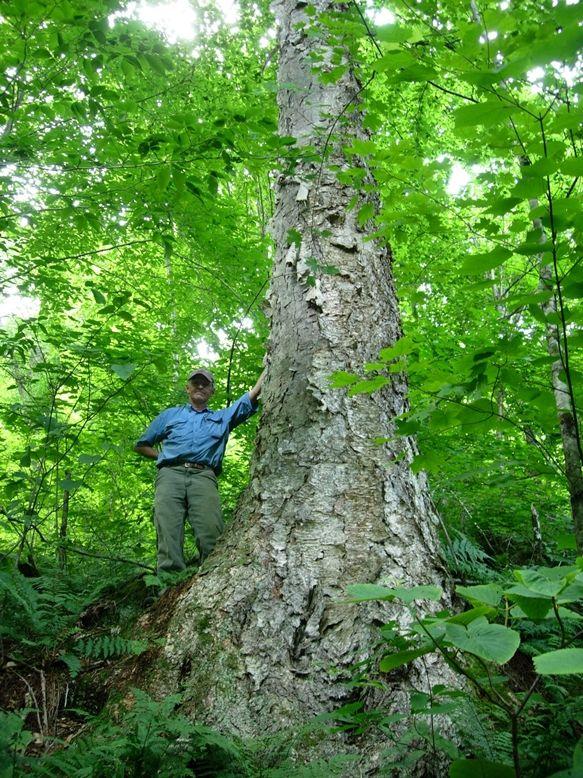- Tags:
- Clean Water,
- Something Wild

Old Growth researcher Chris Kane with an ancient yellow birch leaking hundreds of gallons of water per day at Mount Sunapee, Newbury, NH. (Photo: Dave Anderson)
How Trees Move Water... When the late spring rains arrive
The patter of rain. Fingers of wind comb the canopy of tender leaves. These are exotic sounds of the new tree canopy in late May. New Hampshire forests are adapted to withstand rigors of wind and weather. Leaf structures reflect inner tree plumbing we rarely consider.
Tubes of the water-moving "xylem" are coiled like springs that stretch and recoil to some degree and not break the tension of water in these drinking straws. Stem fibers of differing lengths break at different stress points
Leaves raise water from roots to canopy. Water rises via the plumbing connecting trunks, branches and limbs to fine twigs and newly-arrayed leaves which act as leaky spigots into the air. Microscopic "stomate" pores function as tiny vents releasing water vapor. This process called "transpiration" creates the “tug” of hydraulic tension. Xylem cells in the outer sapwood of large trees can trees lift hundreds of gallons of water each day via capillary action and the draw of leaf stomates.
When spring rains saturate the forest soil, tree stems recycle it upwards and back out to the atmosphere. Trees don't pump water, they leak from leaves along an air-powered hydraulic gradient.
Leaf geometry - size, shape and configuration - conspire with wind to move water upwards. Small leaves of aptly-named trembling aspen feature tiny keels which catch wind and increase moisture spilling from leaves to fuel the rapid growth characteristic of the poplar family.
